Underground Moscow – reconstruction of The Bolshoi Theatre
The historic centres of the large modern cities have not enough space for the modern city life. This fact can be improved with the help of the underground construction. The cultural objects follow the pattern and expand into the soil.
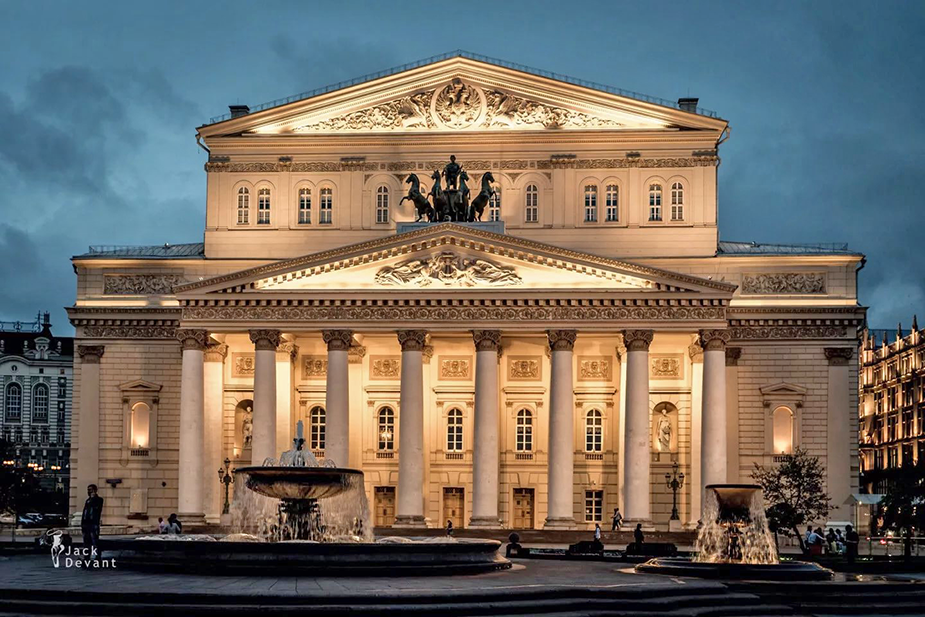
The Bolshoi Theatre in Moscow, Russia
Creation needs bigger spaces
New productions of the old classics keep the repertoires of the old theatres in harmony with the modern world outside of their walls. But the walls themselves can reshape without changing their forms, integrating into the future cities. The aspect worth to remember – most of the world well-known theatres are protected architectural monuments as well as the buildings surrounding them.
Following the examples of their cities, Moscow and St Petersburg, the Bolshoi Theatre and the Mariinsky Theatre long time needed to expand. And they did both opened their second stages in 2002 and 2012 accordingly. However, the new stage is a separate institution with its own inner world, while the historic building meeting high requirements of the modern theatre productions is a challenge to be solved at the old place.
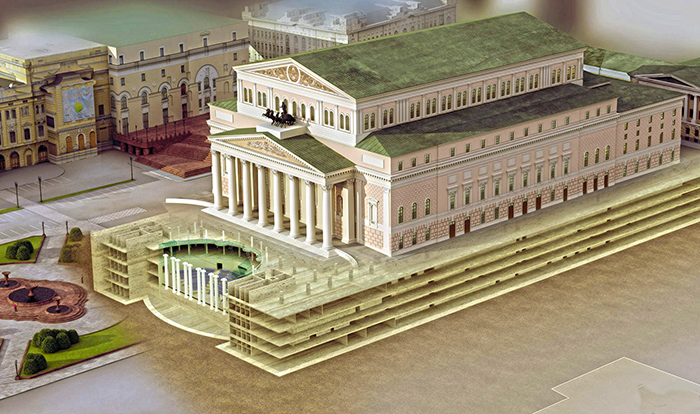
The installation of underground floors of the Bolshoi Theater in Moscow
The construction of the additional warehouse does not change the situation, for example, the Bolshoi theatre acquired such back in 1894. But keeping and creating are too different activities, the modern process of new productions’ creation needs advanced mechanic features and the place for maneuvering preferably in the close vicinity of the stage, the historical one.
The standard practice of modern times comes to aid – the reconstruction with the use of the underground space. The National theatre of Greece did it in 2006 – 2009, the Theatre in St Petersburg on Kamenny Island got its new underground working space in 2012, in Moscow, the underground levels were constructed for the Bolshoi Theater, in 2011.
The basement issues
The building required reconstruction for many reasons, one of them – the weak foundation. The theatre was constructed in 1825 on the stained oak piles, which serve well in water-bearing grounds, with the water level being constant. When the longtime covered the Neglinka River was secured in the permanent sewer and the ground waters changed with the construction of the utility lines, these piles started to crumble.
The instability in the theatre is not well tolerated whether it concerns the sound, the movement or the walls. In addition, previous restoration works severely disturbed the acoustic characteristics. In 2005, the theatre was closed for reconstruction.
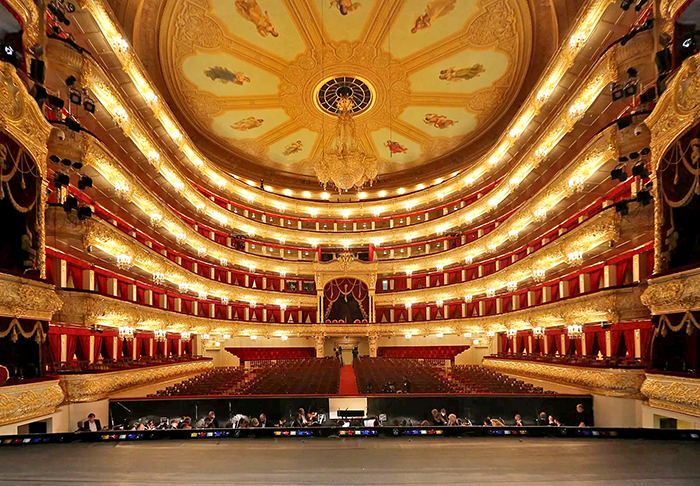
Hall of the Bolshoi Theater in Moscow
According to the audit report, the reconstruction cost was about 660 million dollars. The contractors changed several times, there were critical articles and questions regarding the funding, but the project was implemented. Besides the reconstruction of the existing building, meaning renewal of the interiors and major changes in the technical equipment of the stage and the stagehouse, it envisaged the deepening of the underground space. Everything was meant to do without changing the architectural view.
How to enlarge the place twice without expanding its borders
The construction workers performed a lot in the underground space. The basement required the reinforcement, but some new underground spaces were to be created as well. The work took place between 2006 and 2009. The depth of the new underground part is 26 metres, the theatre got 6 new levels.
With the underground construction technology the total area of the theater was enlarged twice, now it takes 80 000 square metres. The borders of the building were not changed at the surface. The project is quite unique even at the global level. New working areas as well as the concert hall were created under the Theatre square.The underground concert hall is a transformer, planned to meet the highest world standards.
For more details, click on the image
The deeper space under the stage allowed creating mantling pits for the decorations, adding new technical spaces and restoring the acoustic properties. In the Second World War’s aftermath, the restoration of the theatre, suffered from the bombing, was implemented fast and the space under the orchestra pit was filled with the concrete, disturbing the acoustics severely. During the recent restoration the concrete was removed and the pit was expanded to welcome more musicians.
The restoration workers managed to reform the old stage into the state-of-art technical wonder, meeting any requirements of the futuristic large theatre productions – the mechanics of the stage were changed completely, the space was reshaped. The stage now consists of seven two-tier rising and descending platforms, which may be shaped however the director’s fantasy wishes.
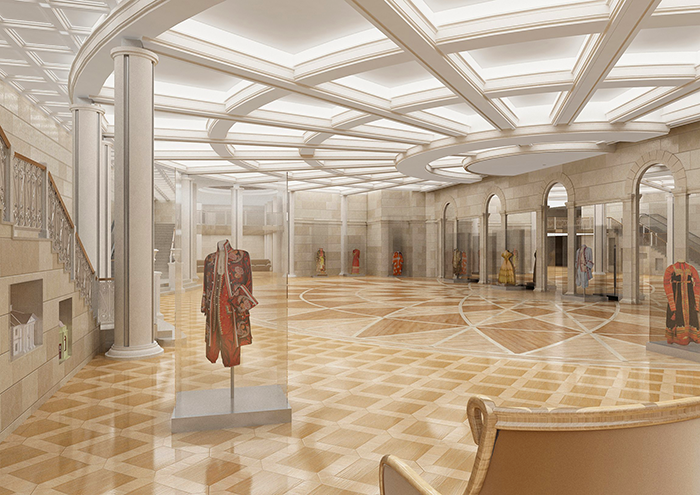
The underground part of the spectator zone of the Bolshoi Theater Source: archi.ru
The underground part has extra exits to the surface – the transparent pavilions on the Theatre square. Also the underground pedestrian passages connect the old building with the warehouse – the historical building of S. Khomyakov.
The theatre parameters:
— the part above ground 117.45 х 62.30 m, including anticum, the level height – from 2.91 to 3.02 m;
— underground part 151.72 х 77.72 m, the level heights – 2.80; 3.30 and 3.60 m.
Underground hall and metro noise
The new concert hall in the underground space of the Bolshoi Theatre is situated just in 40 metres from the operating underground metro line. Such a neighborhood is a brave solution, requiring the detailed design planning.
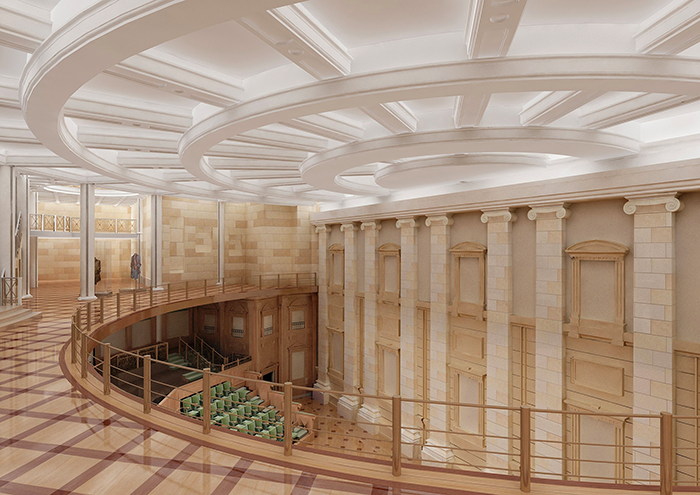
The outer part of the spectator zone of the Bolshoi Theater. Pavel Andreev’s workshop, 2009-2010 Source: archi.ru
Underground design project’s authors
The main architect of the whole restoration was changed several times. But the underground part was performed by the architectural bureau of Pavel Andreev. The chief architect was A. Butyrin.
The technical part was performed thanks to the work of V. Il’yichev, professor, Eng. Sc.D. He is experienced in piles foundation’s construction and previously participated in the construction of the basement of the Cathedral of Christ the Saviour in Moscow, the underground trade center in the very centre of Moscow and other objects. V. Il’yichev is a president of the Russian Geotechnical Society, the member of the ISSMGE Board.
For more details, click on the image
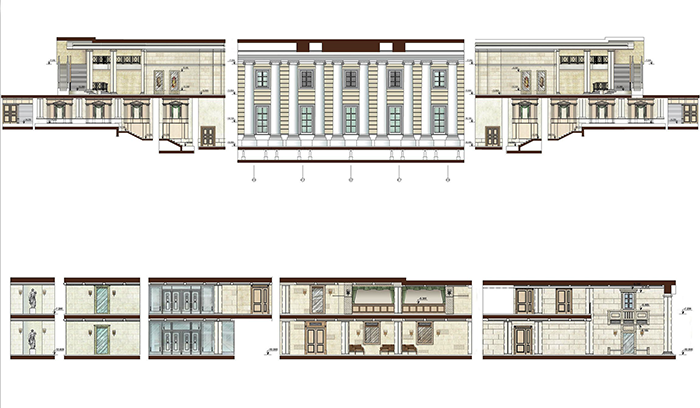
The outer part of the spectator zone of the Bolshoi Theater. Pavel Andreev’s workshop, 2009-2010 Source: archi.ru
Notable example
Let the architectural critics evaluate the restoration’s success and the artists judge the quality of acoustics and the comfort of the service space. But from the point of underground construction, the Bolshoi Theatre’s restoration is a great success, as it may serve as a remarkable example of the underground space use saving the historic building and increasing the comfort of living in the large city.
Now the old buildings, losing their functions due to the lack of modern settings, have the guidelines how to stay in the history of the city for another century or two – to get the roots deeper into the ground, and while holding their place with these young roots to compete bravely with the modern high-rises.
Additional articles
Select an article of interest:
Mongolia designs new railway “Bohdan”
March 1, 2022
The construction of largest hydraulic tunnel has begun in Qatar
February 28, 2022
JSC "VO "Mashinoimport" supplied escalators for the Novosibirsk metro
December 22, 2021
Russian city Samara plans to build a metro
December 17, 2021
Tell us about our article to your friends,
sharing a link in a social network


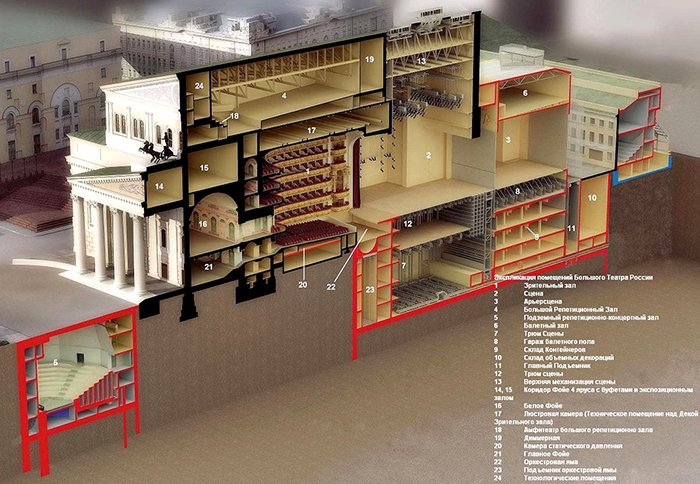













Comments (0)
I hereby confirm that I am familiar with the privacy policy of
and agree to the processing of personal data. Read more